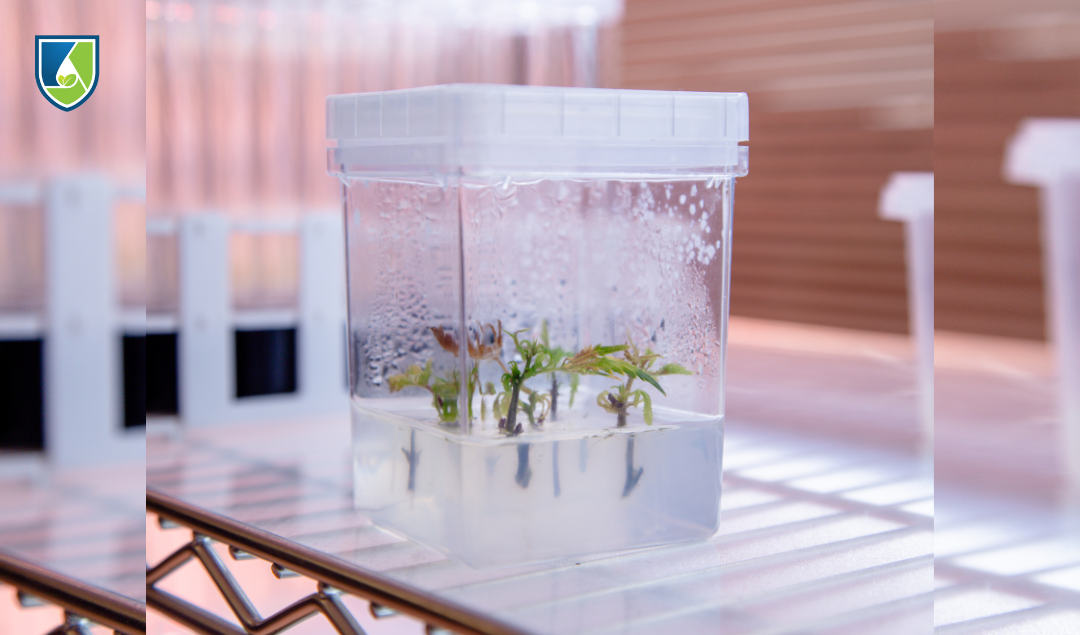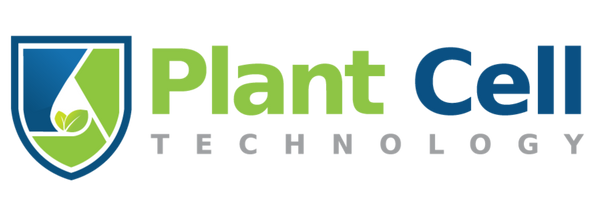
Steps to a Successful At-Home Tissue Culture Lab
As a content and community manager, I leverage my expertise in plant biotechnology, passion for tissue culture, and writing skills to create compelling articles, simplifying intricate scientific concepts, and address your inquiries. As a dedicated science communicator, I strive to spark curiosity and foster a love for science in my audience.


Introduction
Setting up a tissue culture lab at home is easier than you think. With advancements in tissue culture technology and increasing global interest, more individuals are exploring the opportunity to build their own home labs.
However, it's important to note: this guide is not recommended for commercial purposes. It’s primarily for hobbyists or small-scale ventures hoping to try their hands on the technique.
Before attempting this method, it's crucial to familiarize yourself with the approach and its procedures. If you're unsure, don't worry – we're here to help you!
In this article, we will cover what you must know before setting up our lab and guide you through the process on ho how you can get started on building your own lab at home.
You Must Know This Before Building A Home Lab
1. Basic of Tissue Culture
This is a must. Before getting into tissue culture, you must know what it is and how it works. You can get most of this info from our blog or YouTube Channel.
Here’s a brief to save you time:
Tissue culture involves obtaining tissue or a piece of a plant (known as an explant) and introducing it into a nutrient media under carefully controlled sterile conditions—that must mimic their natural environment. Under favorable conditions, not only tissues but even single plant cells can regenerate into a whole plant.

How is this possible?
This is due to plant cells' totipotency, which means they can regenerate into a whole plant. Plant cells contain the complete genetic information required to form all types of cells, tissues, and organs. When provided with the right conditions, these cells can dedifferentiate, proliferate, and then redifferentiate into new plant structures. Gottlieb Haberlandt first introduced this concept in 1902, making him the father of plant tissue culture.
2. Applications of Tissue Culture
You want to do tissue culture. But why? Tissue culture has helped growers and culturists over the years in several applications:
- Producing disease-free plants
- Producing plants at a large scale, irrespective of their favorable season
- Preserve valuable genetic diversity
- Produce haploid plants
- Conserve a plant species
- Produce secondary metabolites
- Research or experimental studies
Before setting up the lab, it’s essential to clarify your goals. What do you aim to achieve?
Is it just learning a new technique, cloning your favorite plant using a different technique, or expanding your business using this approach? Whatever your reason is, you must know the potential of tissue culture and your purpose of using the technique before getting started with it.
3. Challenges of Tissue Culture
Before stepping into any new area, we must always know about the problems we might face.
Yes, even if it’s trying tissue culture at home.
Tissue culture is a delicate technique that demands a completely aseptic environment and meticulous attention. This makes it somewhat challenging to perform. However, being aware of potential problems and their solutions can help you stay prepared and more attentive while performing the technique.

Some common problems observed in tissue culture are:
- Contamination: This is the most frequent and potentially devastating issue. Bacteria, fungi, and other microbes can rapidly invade cultures, leading to stunted growth, discoloration, and ultimately, complete culture failure.
- Explant Death: Explants might die due to various factors, such as excessive stress during surface sterilization, incompatibility with the culture medium, or unfavorable growth conditions.
- Oxidation: When explants are exposed to air during the transfer process, browning may occur due to oxidation. This can hinder growth and development.
- Vitrification: This phenomenon results in glassy and translucent plantlets with abnormal growth patterns. Hormonal imbalances, high sugar content in the media, or unfavorable environmental conditions can contribute to vitrification.
- Somaclonal Variation: This refers to genetic variations that can occur in regenerated plants during the culturing process. These variations might impact desired plant characteristics.
- Nutrient Deficiency: Inadequate levels of essential nutrients in the culture medium can lead to stunted growth, malformed plantlets, and nutrient deficiencies in the final plants.
- Improper Light and Temperature: Light intensity, duration, and spectrum, along with temperature fluctuations, can significantly impact plant growth and development in tissue culture. Finding the optimal conditions for your specific plant species is crucial.
- Acclimatization Challenges: Successfully transferring plantlets from the sterile culture environment to a non-sterile environment (like soil) can be challenging. This process, called acclimatization, requires careful humidity control and gradual exposure to the external environment.
What Do You Need To Build A Tissue Culture Home Lab?
Here's a breakdown of the key components involved:
- Explants: These are tiny pieces of plant tissue, such as shoot tips, nodes, or leaves, that will be used to initiate new plant growth.
- Culture Medium: This specially formulated liquid or gel provides essential nutrients, hormones, and sugars to support the growth and development of the explants.
- Aseptic Techniques: These practices ensure a sterile environment throughout the culturing process, minimizing the risk of contamination.
- Growth Chamber: This controlled environment provides optimal light, temperature, and humidity for the developing plantlets.
Building Your At-Home Lab:
Here's what you'll need to set up your very own tissue culture lab:
Essential Equipment:
- Laminar Flow Hood: This equipment provides a sterile work area by filtering out airborne contaminants. While ideal, acquiring the equipment can be costly. Alternatively, aseptic techniques can be employed using a still air box or a clean workspace.
However, when conducting experiments, careful attention is necessary. If you intend to use tissue culture for commercial purposes, proper lab equipment is essential.
- Microscope (Optional but helpful): A microscope allows you to observe the explants and assess their health during the culturing process.
- Scalpel or Razor Blades: These will be used to make precise cuts to isolate explants.
- Forceps: These will be used to handle explants aseptically without touching them with your fingers.
- Erlenmeyer Flasks or Petri Dishes: These sterile containers will house the explants and culture medium.
- Parafilm: This sealing film helps prevent contamination by creating a breathable barrier.
- Measuring Cylinders and Graduated Pipettes: These are essential for preparing the culture medium accurately.
- Bleach (Sodium Hypochlorite) or Ethanol (Alcohol): These will be used for surface sterilization of equipment and explants.
- Distilled Water: This will be used to prepare solutions and rinsing equipment.
- pH Meter: This helps ensure the proper acidity/alkalinity of your culture medium, as pH plays a crucial role in plant growth.
- Autoclave: This equipment sterilizes equipment and media using high-pressure steam. You can also use a pressure cooker with a pressure gauge at home.

Setting Up a Sterile Workspace:
Dedicate a room in your home specifically for your tissue culture processes. Divide it into distinct areas, such as culturing, storage, preparation, and incubation areas.
For a culture area:
- Choose a dedicated workspace: This area should be clean and uncluttered, preferably away from sources of dust and potential contaminants.
- Clean and disinfect the workspace: Thoroughly wipe down surfaces with a disinfectant solution like diluted bleach or ethanol.
- Prepare your aseptic transfer area: This could be a laminar flow hood (if available) or a still air box. Clean the working surface with disinfectant and line it with a fresh sheet of paper towel or aluminum foil.
3. Preparing the Media
The culture medium is a gel-like substance that provides nutrients for the plants. It typically contains:
- Agar: A gelling agent.
- Nutrients: Macronutrients and micronutrients necessary for plant growth.
- Vitamins and Hormones: To promote root and shoot development.
Read this article to learn about the steps of media preparation.
This is step is followed by:
- Surface sterilization of explants
- Aseptic transfer of explants to culture vessels
- Incubation of cultures in a controlled environment
- Acclimation of tissue culture plantlets.
You can learn about each of these stages of tissue culture in detail in this article.
Set Up Your Own Home-Tissue Culture Lab With Plant Cell Technology
Setting up a successful at-home tissue culture lab is a rewarding venture that offers numerous benefits. By following the steps outlined in this guide, you can establish a functional lab and begin propagating plants efficiently.
While challenges like contamination and browning may arise, understanding how to troubleshoot these issues will enhance your success. As you gain experience, your at-home tissue culture lab can become a hub for innovation and growth, contributing to sustainable agriculture and plant conservation efforts.
Interested in starting your own tissue culture lab?
Plant Cell Technology can help!
We offer a comprehensive range of innovative and cost-effective tissue culture products to equip you for every stage of the process. From essential components like MS media and gelling agents to our unique solutions like PPM™ (Plant Preservative Mixture) and Biocoupler™, we have everything you need to optimize your culturing experience.
Stuck on a specific step?
Our expert consultation services are available to help experienced culturists troubleshoot challenges and refine their techniques.
New to tissue culture?
Don't worry! We offer curated master classes led by industry experts. These classes provide a comprehensive foundation in the principles and practices of successful plant propagation through tissue culture.
At Plant Cell Technology, we believe there's a solution for every tissue culture challenge. If you can't find what you're looking for in our product range, simply contact us at info@plantcelltechnology.com.
We're dedicated to providing exceptional service and will do our best to answer your questions and address any specific needs you might have.
Happy Culturing!
Blog Categories
View by Level
Popular Blogs

The Advantage of Temporary Immersion Systems Over Solid Media
Introduction Is it finally time to transition away from agar? If you manage a commercial tissue culture lab or a...
Read More
How Samantha Bridges the Gap Between the Nursery and the Lab
The Introduction Building a tissue culture program from the ground up requires more than just scientific knowledge—it requires the grit...
Read MoreSubscribe to Our Newsletter
1 comment
To whom it may concern:
I am following your platform of plant cell tech that is very useful. However, I would like to explore the possibility to have more detail information on Plant Stem Cells and its possibility to differentiate cells and tissue in other more complex structure such as a tree cork for instance, by isolation, cultivation and diffentiation of phellogen meristematic tissue or to cultivate Cannabis plant stem cells to be differentiated in trichomes crop free.









Join the conversation
Your email address will not be published. Required fields are marked